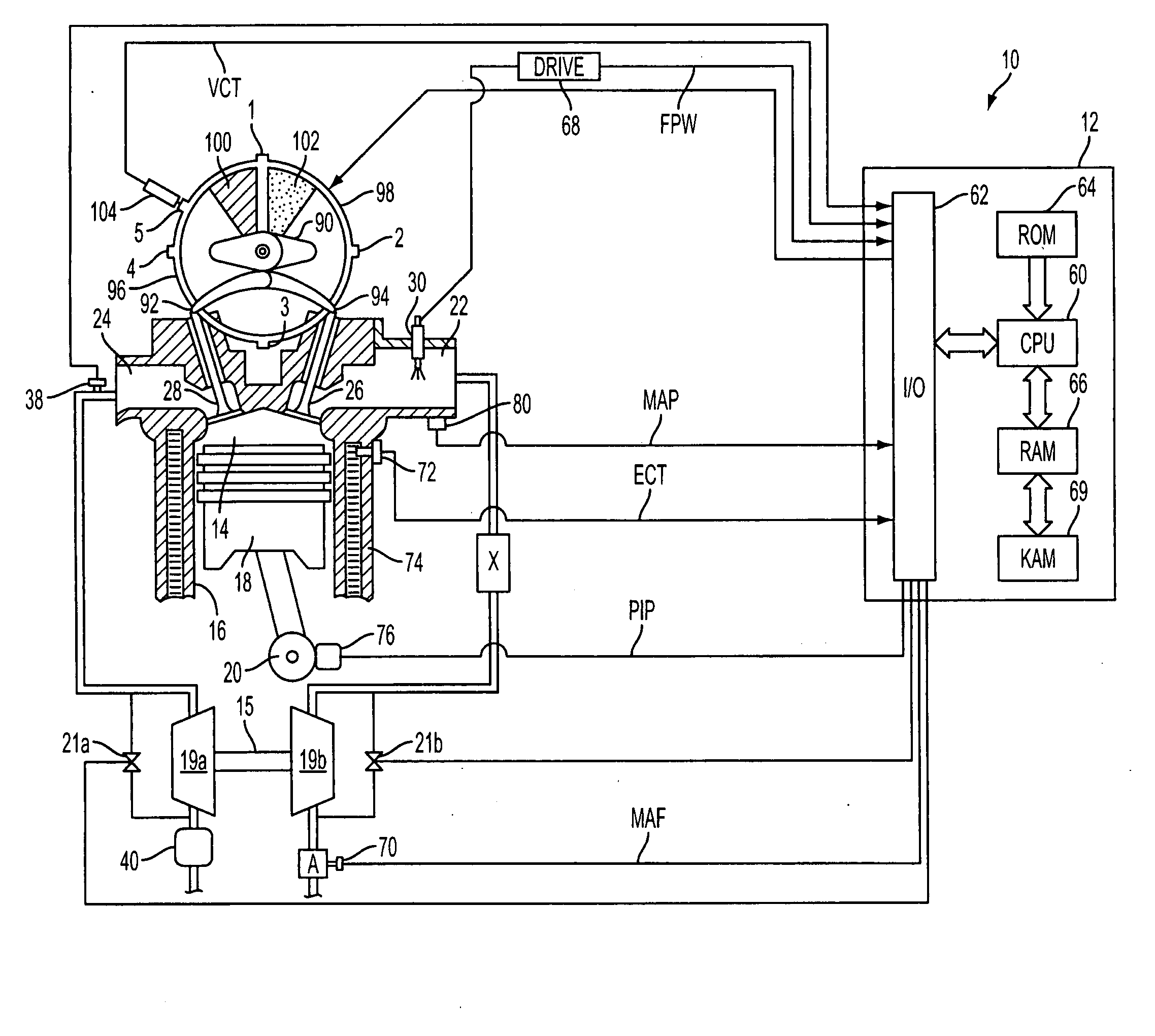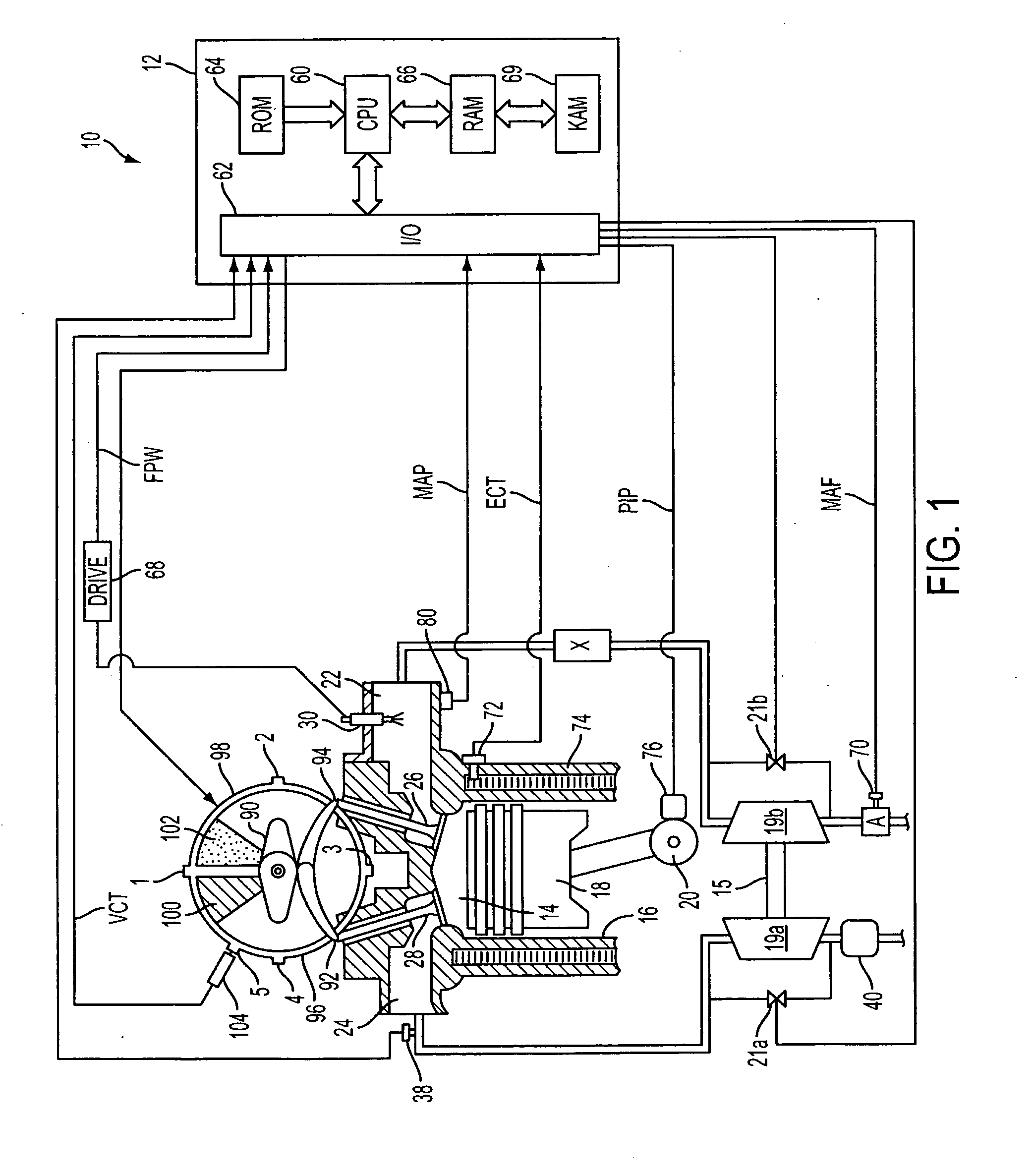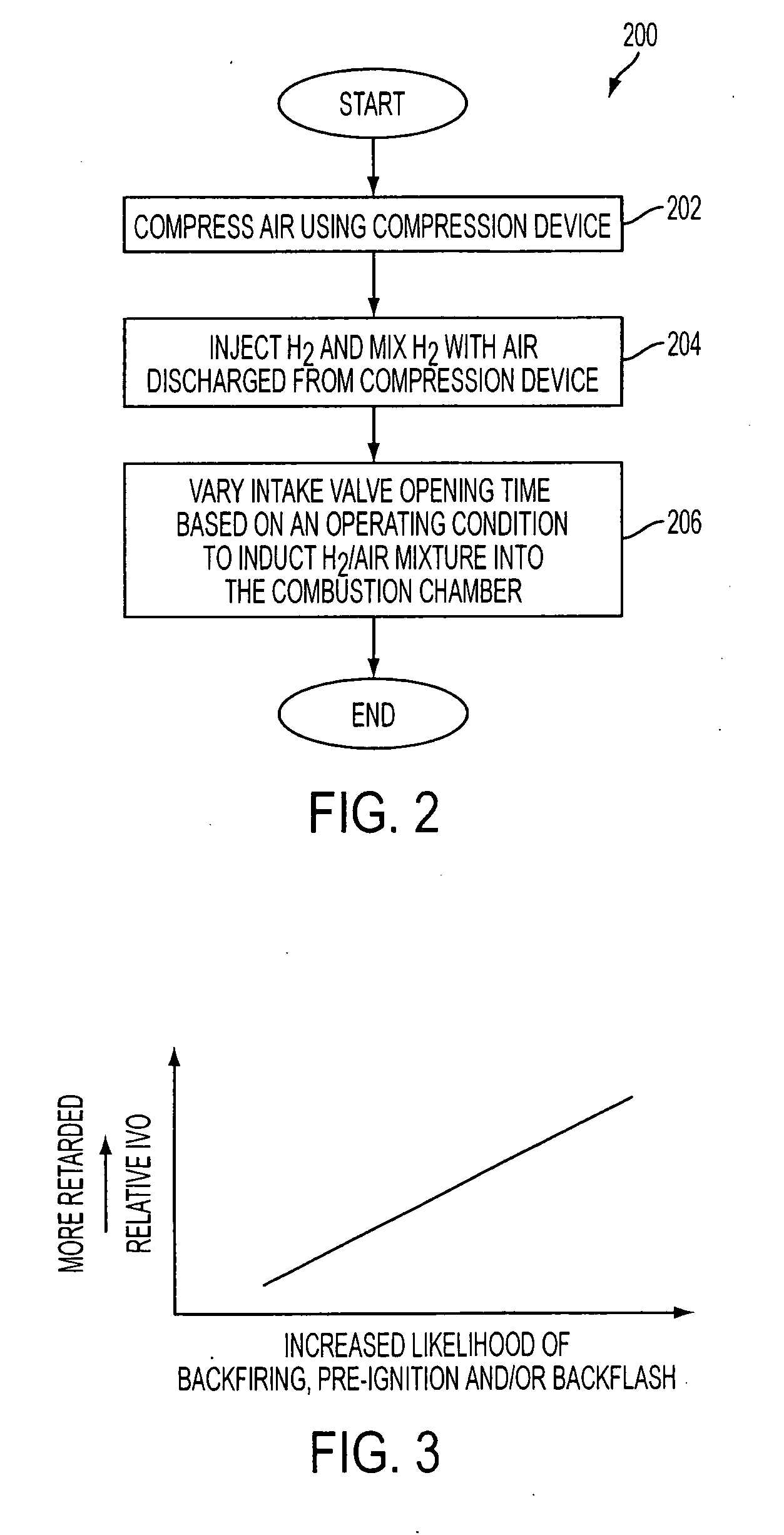Variable intake valve and exhaust valve timing strategy for improving performance in a hydrogen fueled engine
a technology of hydrogen fueled internal combustion engine and timing strategy, which is applied in the direction of machines/engines, non-mechanical valves, transportation and packaging, etc., can solve the problems of increasing the propensity of fuel to backfire, pre-ignition, and/or backlash, reducing engine output, and reducing so as to reduce the effect of exhaust emissions and increasing fuel renewability and transferability
- Summary
- Abstract
- Description
- Claims
- Application Information
AI Technical Summary
Benefits of technology
Problems solved by technology
Method used
Image
Examples
Embodiment Construction
[0016]FIG. 1 shows, generally at 10, an exemplary embodiment of one cylinder of a multi-cylinder engine, intake and exhaust paths connected to that cylinder, and an exemplary embodiment of a camshaft having a variable timing mechanism for controlling the valves of the cylinder. It will be appreciated that the configuration of engine 10 is merely exemplary, and that the systems and methods described herein may be implemented in any other suitable engine. Further, the engine may be spark ignited via a spark plug located in the cylinder (not shown), the timing of which may be varied with operating conditions. While this example shows a system for varying intake and exhaust timing, in practice, separate systems may be used. For example, one system is used for adjusting intake valve timing (opening and / or closing) and another for adjusting exhaust valve timing (opening and / or closing). Further, additional adjustment may be used, such as variable valve lift, if desired.
[0017] Continuing ...
PUM
 Login to View More
Login to View More Abstract
Description
Claims
Application Information
 Login to View More
Login to View More - R&D
- Intellectual Property
- Life Sciences
- Materials
- Tech Scout
- Unparalleled Data Quality
- Higher Quality Content
- 60% Fewer Hallucinations
Browse by: Latest US Patents, China's latest patents, Technical Efficacy Thesaurus, Application Domain, Technology Topic, Popular Technical Reports.
© 2025 PatSnap. All rights reserved.Legal|Privacy policy|Modern Slavery Act Transparency Statement|Sitemap|About US| Contact US: help@patsnap.com



